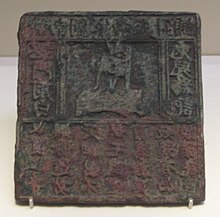history of advertisment ,,,,
History
Main article: History of advertising
Egyptians used papyrus to make sales messages and wall posters.[citation needed] Commercial messages and political campaign displays have been found in the ruins of Pompeii and ancient Arabia. Lost and found advertising on papyrus was common in Ancient Greece andAncient Rome. Wall or rock painting for commercial advertising is another manifestation of an ancient advertising form, which is present to this day in many parts of Asia, Africa, and South America. The tradition of wall painting can be traced back to Indian rock art paintings that date back to 4000 BC.
In ancient China, the earliest advertising known was oral, as recorded in the Classic of Poetry (11th to 7th centuries BC) of bamboo flutes played to sell candy. Advertisement usually takes in the form of calligraphic signboards and inked papers. A copper printing plate dated back to the Song dynasty used to print posters in the form of a square sheet of paper with a rabbit logo with "Jinan Liu's Fine Needle Shop" and "We buy high-quality steel rods and make fine-quality needles, to be ready for use at home in no time" written above and below is considered the world's earliest identified printed advertising medium.
In Europe, as the towns and cities of the Middle Ages began to grow, and the general populace was unable to read, instead of signs that read "cobbler", "miller", "tailor", or "blacksmith" would use an image associated with their trade such as a boot, a suit, a hat, a clock, a diamond, a horse shoe, a candle or even a bag of flour. Fruits and vegetables were sold in the city square from the backs of carts and wagons and their proprietors used street callers (town criers) to announce their whereabouts for the convenience of the customers. The first compilation of such advertisements was gathered in "Les Crieries de Paris", a thirteenth-century poem by Guillaume de la Villeneuve.
In the 18th century advertisements started to appear in weekly newspapers in England. These early print advertisements were used mainly to promote books and newspapers, which became increasingly affordable with advances in the printing press; and medicines, which were increasingly sought after as disease ravaged Europe. However, false advertising and so-called "quack" advertisements became a problem, which ushered in the regulation of advertising content.
19th century
Thomas J. Barratt from London has been called "the father of modern advertising".Working for the Pears Soap company, Barratt created an effective advertising campaign for the company products, which involved the use of targeted slogans, images and phrases. One of his slogans, "Good morning. Have you used Pears' soap?" was famous in its day and into the 20th century.
Barratt introduced many of the crucial ideas that lie behind successful advertising and these were widely circulated in his day. He constantly stressed the importance of a strong and exclusive brand image for Pears and of emphasizing the product's availability through saturation campaigns. He also understood the importance of constantly reevaluating the market for changing tastes and mores, stating in 1907 that "tastes change, fashions change, and the advertiser has to change with them. An idea that was effective a generation ago would fall flat, stale, and unprofitable if presented to the public today. Not that the idea of today is always better than the older idea, but it is different – it hits the present taste."[14]
As the economy expanded across the world during the 19th century, advertising grew alongside. In the United States, the success of this advertising format eventually led to the growth of mail-order advertising.
In June 1836, French newspaper La Presse was the first to include paid advertising in its pages, allowing it to lower its price, extend its readership and increase its profitability and the formula was soon copied by all titles. Around 1840, Volney B. Palmer established the roots of the modern day advertising agency in Philadelphia. In 1842 Palmer bought large amounts of space in various newspapers at a discounted rate then resold the space at higher rates to advertisers. The actual ad – the copy, layout, and artwork – was still prepared by the company wishing to advertise; in effect, Palmer was a space broker. The situation changed in the late 19th century when the advertising agency of N.W. Ayer & Son was founded. Ayer and Son offered to plan, create, and execute complete advertising campaigns for its customers. By 1900 the advertising agency had become the focal point of creative planning, and advertising was firmly established as a profession. Around the same time, in France, Charles-Louis Havas extended the services of his news agency,Havas to include advertisement brokerage, making it the first French group to organize. At first, agencies were brokers for advertisement space in newspapers. N. W. Ayer & Sonwas the first full-service agency to assume responsibility for advertising content. N.W. Ayer opened in 1869, and was located in Philadelphia.


No comments:
Post a Comment